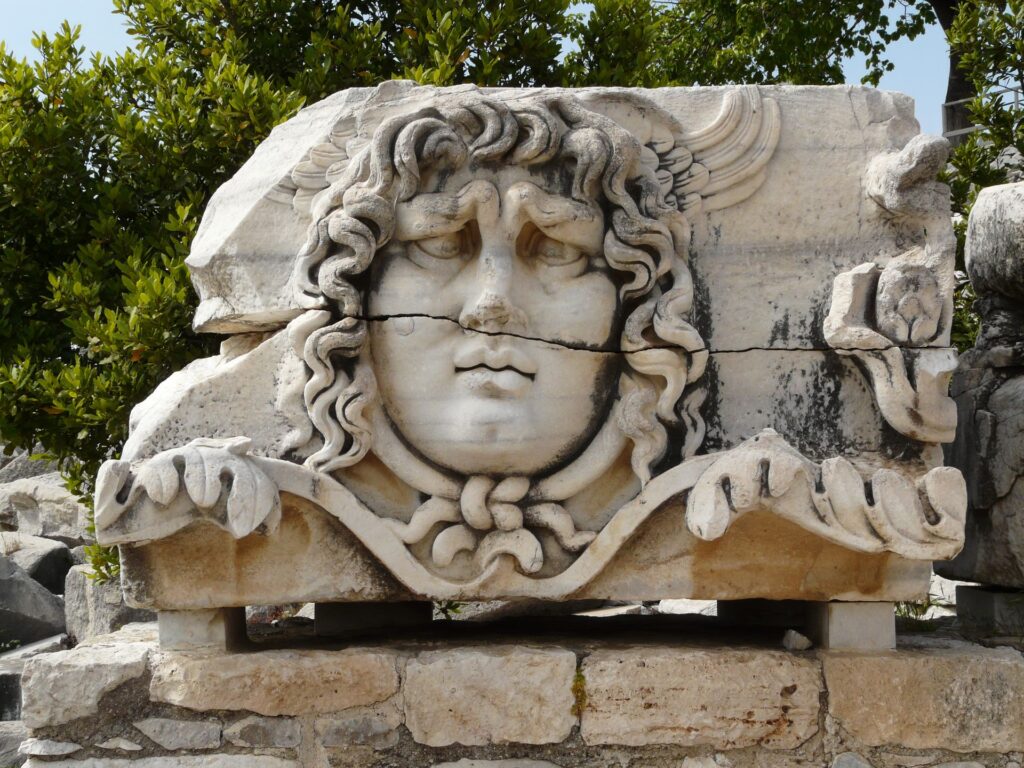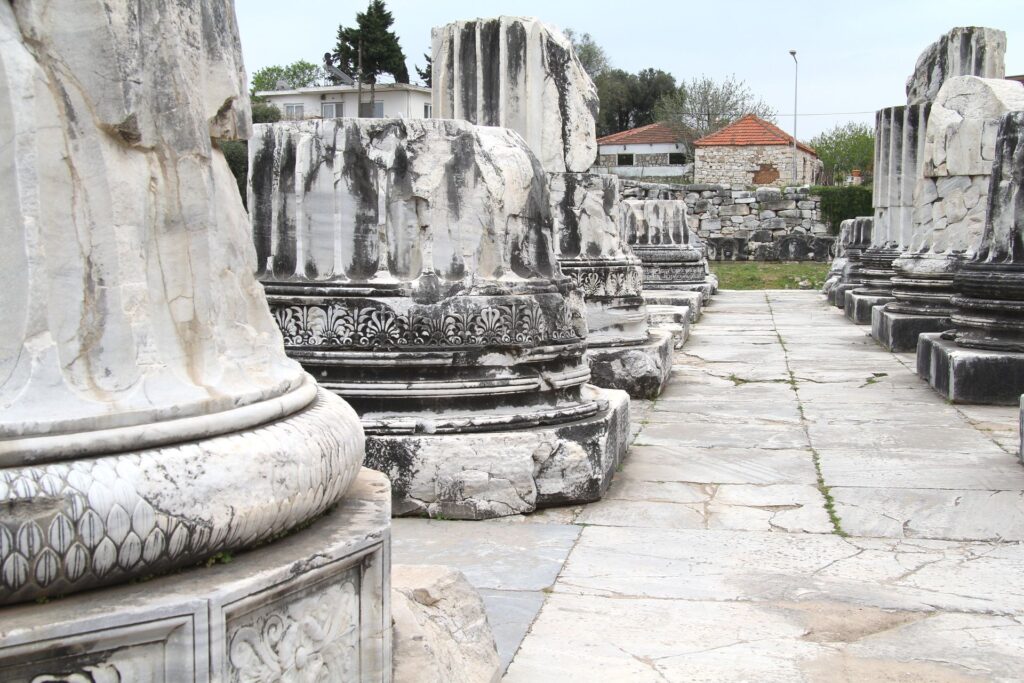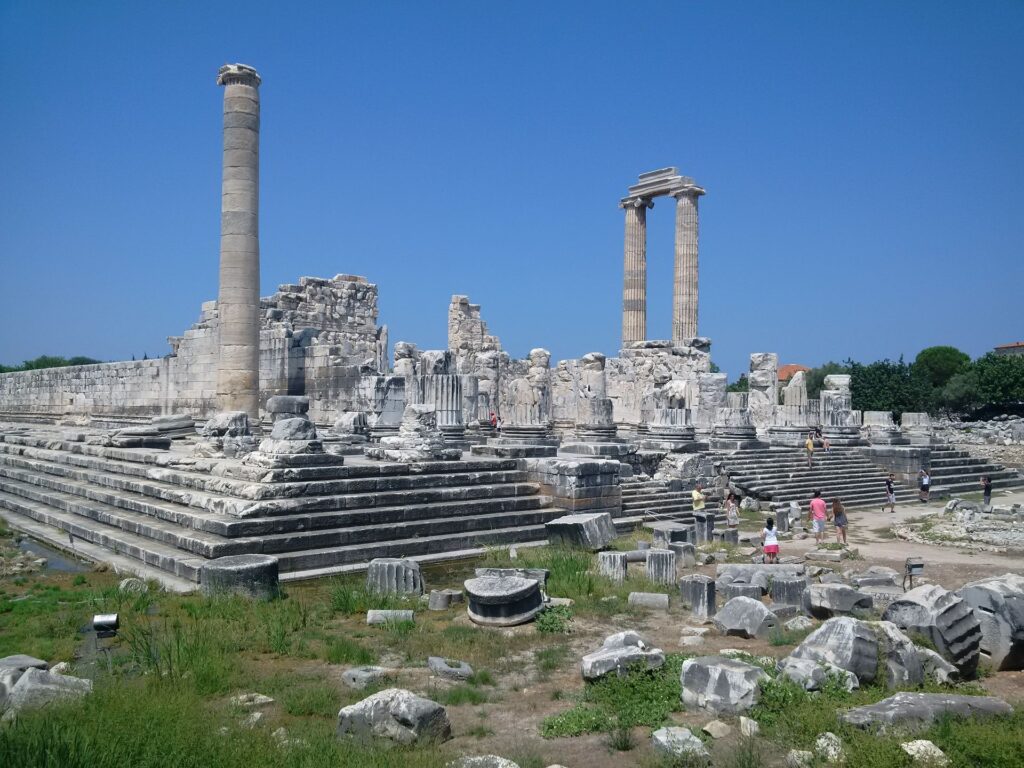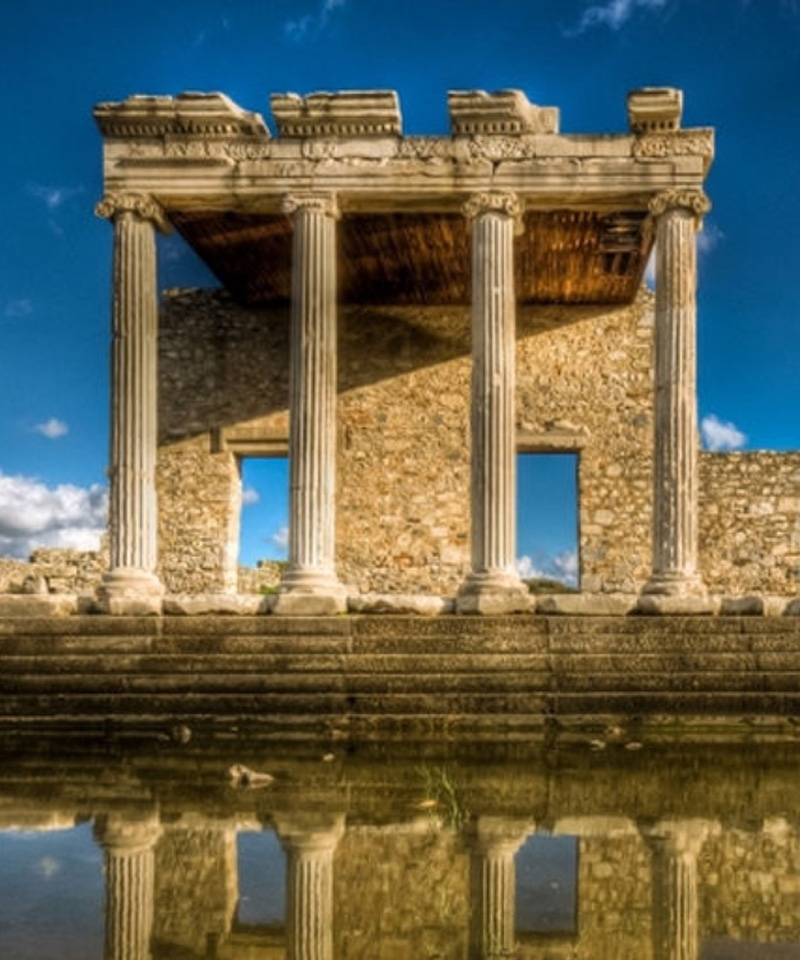PRIENE
Priene is located 65 km west of Aydın, and only 15 km to Söke. The city changed its location at least two times in history, due to silting process of the Meander Valley.
The present city was established here in the 4th century BCE, and its prior location remains a mystery, buried somewhere under the meander valley. Although Priene was not as important as Miletos or Ephesus in Ionia, hosting the Panionion meetings gave the city an exceptional privilege. Panionion was a political organization where Ionians met to discuss issues about Ionia and the place where they gathered was always in Priene’s territory. One of the seven sages of antiquity, Bias, a famous lawyer and known for his valuable advices, was from Priene.
Today visitor to Priene witness’ a purely Hellenistic city, the city was not over built during the Roman Period as many others were and preserved as it was 2500 years ago. The best designed and preserved ancient theater is here as well as the best designed Ionic Temple, dedicated to Athena. The city walls, agora, Prytaneion, Fish and Meat Market are all in excellent condition. One can also see the “oikos” houses of the Hellenistic period and a magnificent grid plan. If you take a walk down to the well-preserved fortifications, you can also visit the lower gymnasion. Mount Mykele which dominates the city forms a great view.
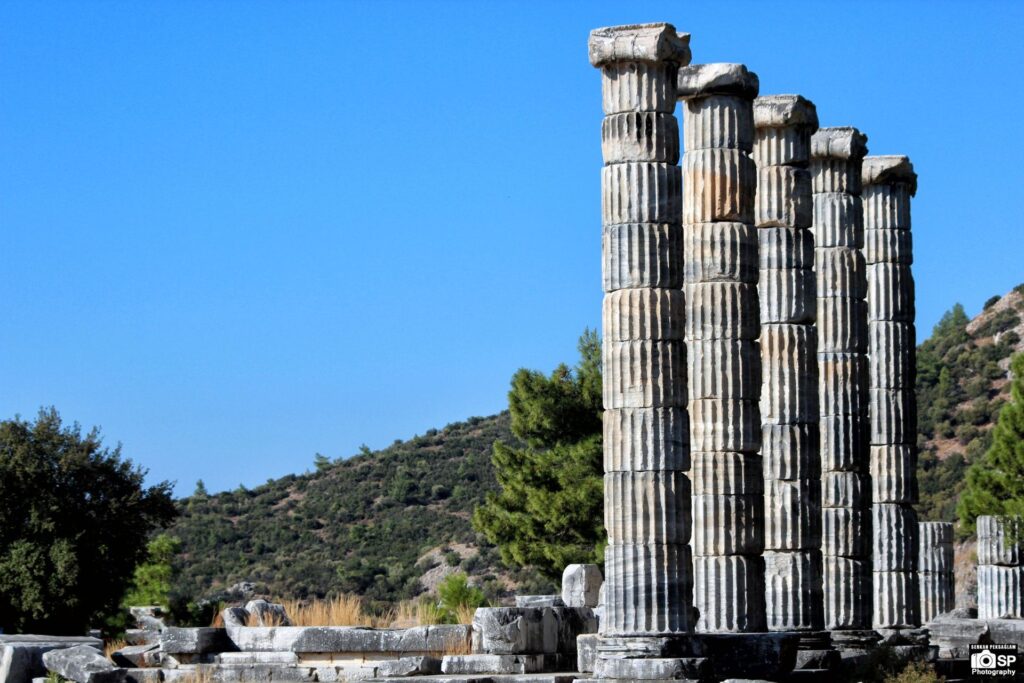
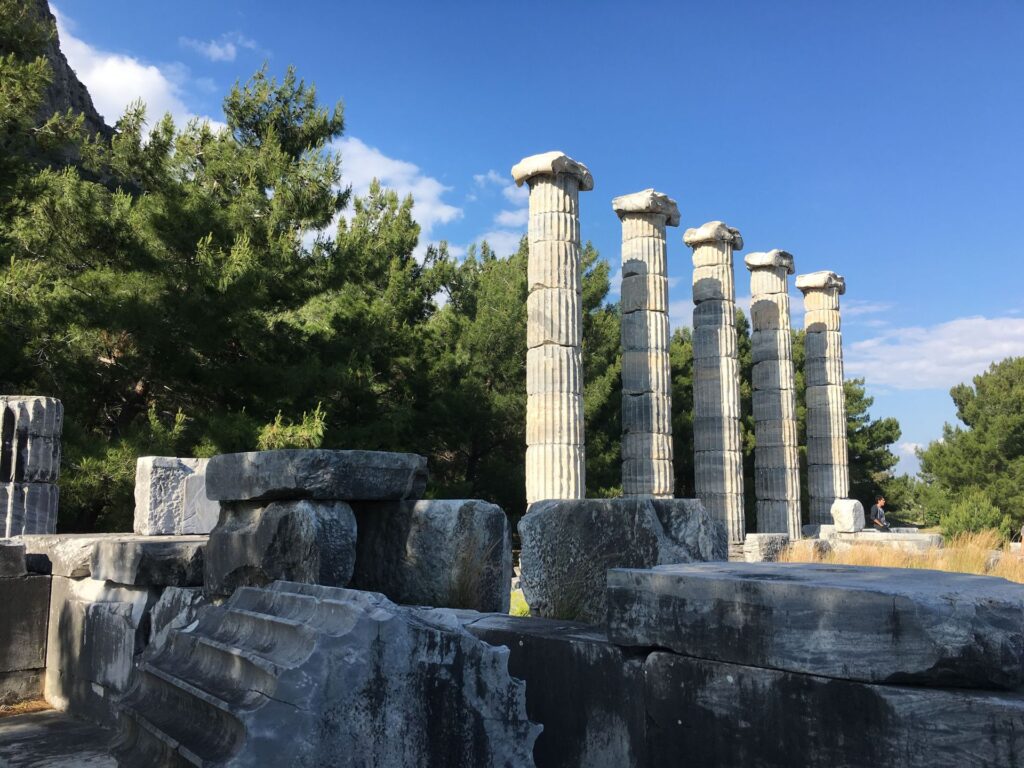
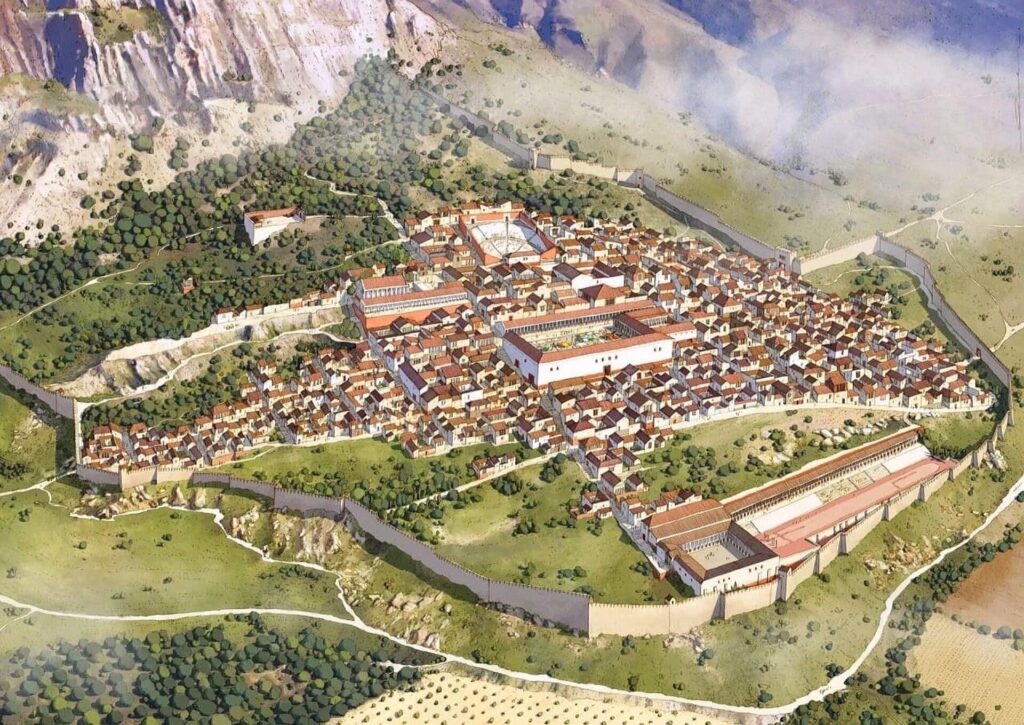
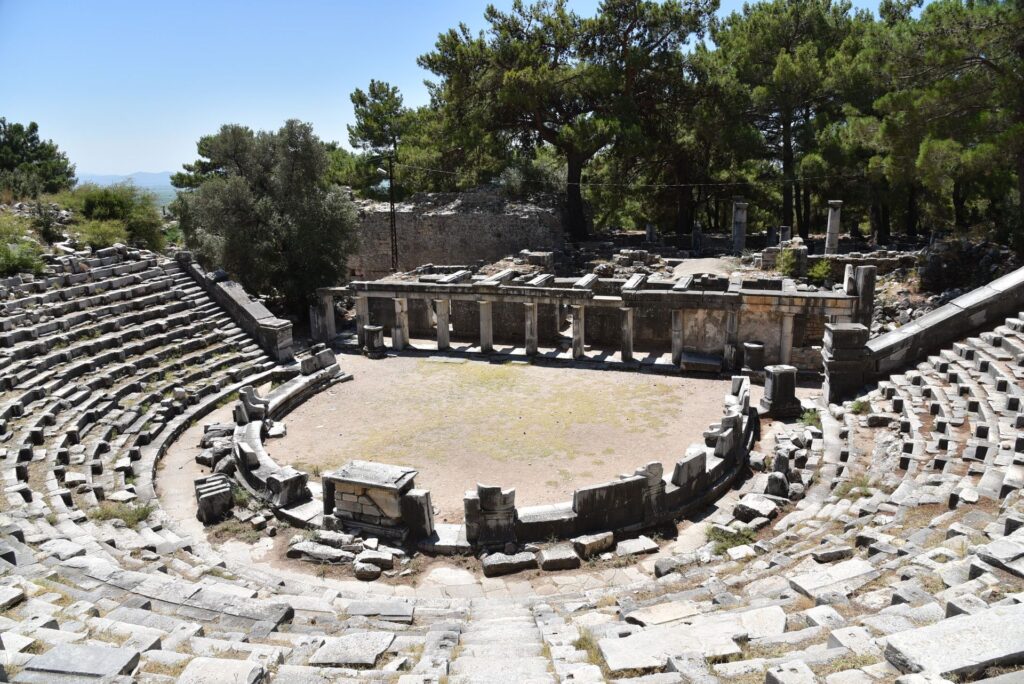
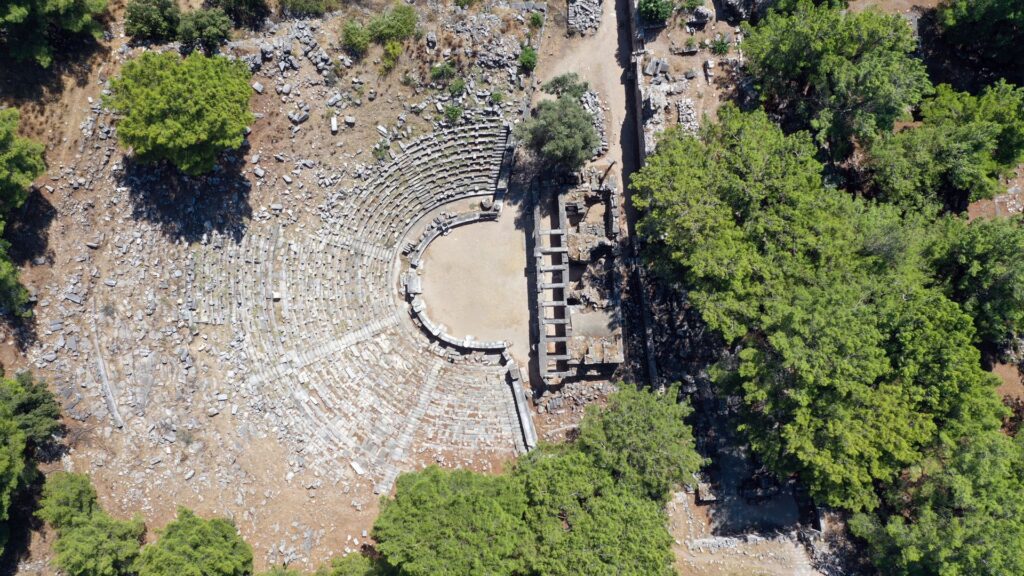
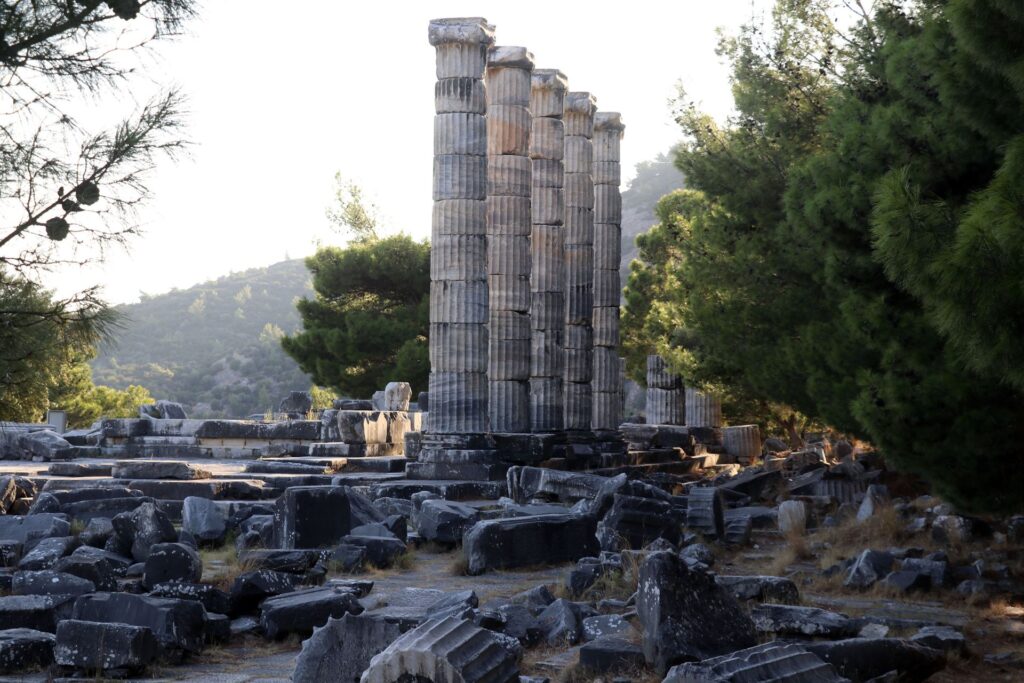
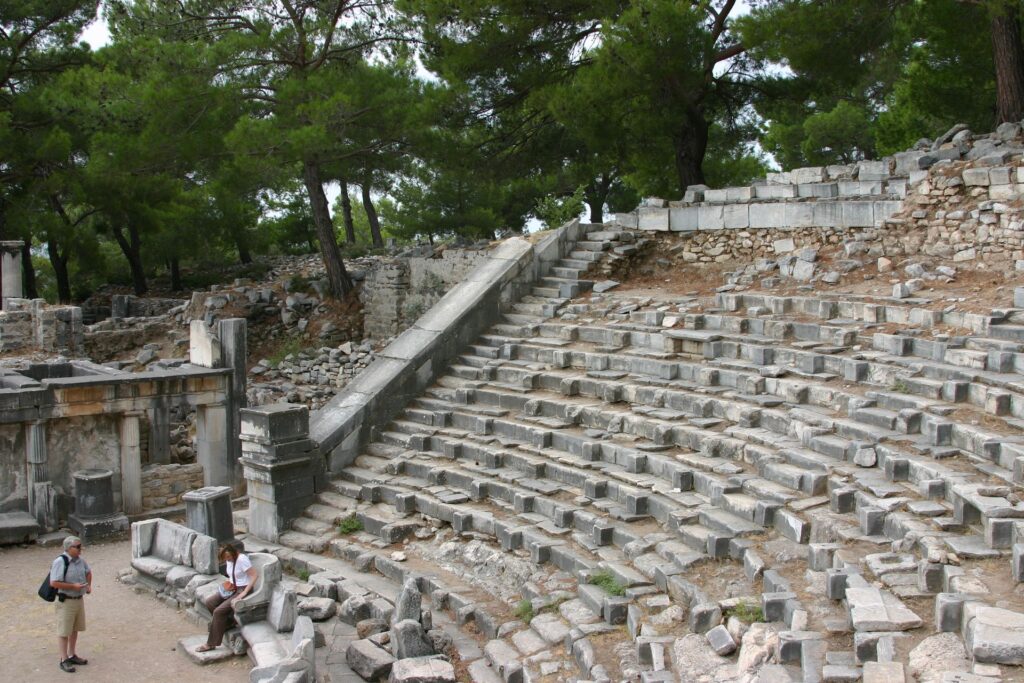

MILETOS (Leading city of Ionian League)
Miletos lies some 85 km from Aydın and 35 km from Söke, on the meander valley. A visit to Priene, Miletos and Didyma can be done on a day trip as all three cities are close to each other.
Once the great maritime city of the archaic period, Miletos was politically and economically the indeed the most powerful city in Ionia in its early days. We hear from ancient sources that they have established more than 90 colonies along the Aegean and Black sea including Sinope, and Amisos. Brillant intellectual achievements followed this wealth and prosperity, Thales, Anaximander and Anaximandros are considered to be the first nature philosophers of the ancient world. Thales, for the first time, examined natural phenomena only for the sake of his curiosity and daily practical needs. His followers, Anaximander and Anaximandros tried to explain things by observing the nature instead of accepting them as act of pagan gods. Today’s modern science agrees Miletos as the birthplace of modern science and philosophy.
As Meander valley silted up the harbors of Miletos, by the end of the 3rd century BCE, Miletos was left without a harbor and todays visitor can only see vast fields around the city.
As the city was entirely rebuilt during the Hellenistic and Roman Periods, little is left from the great archaic city. One can still see the grid, or the Hippodamic plan, applied by Hippodomos of Miletos. The great theater of Miletos is dominant as you enter the city, and it is in an incredibly good preservation. The agora, partly restored stoa, delphinion, Roman and Turkish baths, the bouleuterion, İlyas Bey Mosque and Faustina baths are some of the remarkable structures of Miletos.


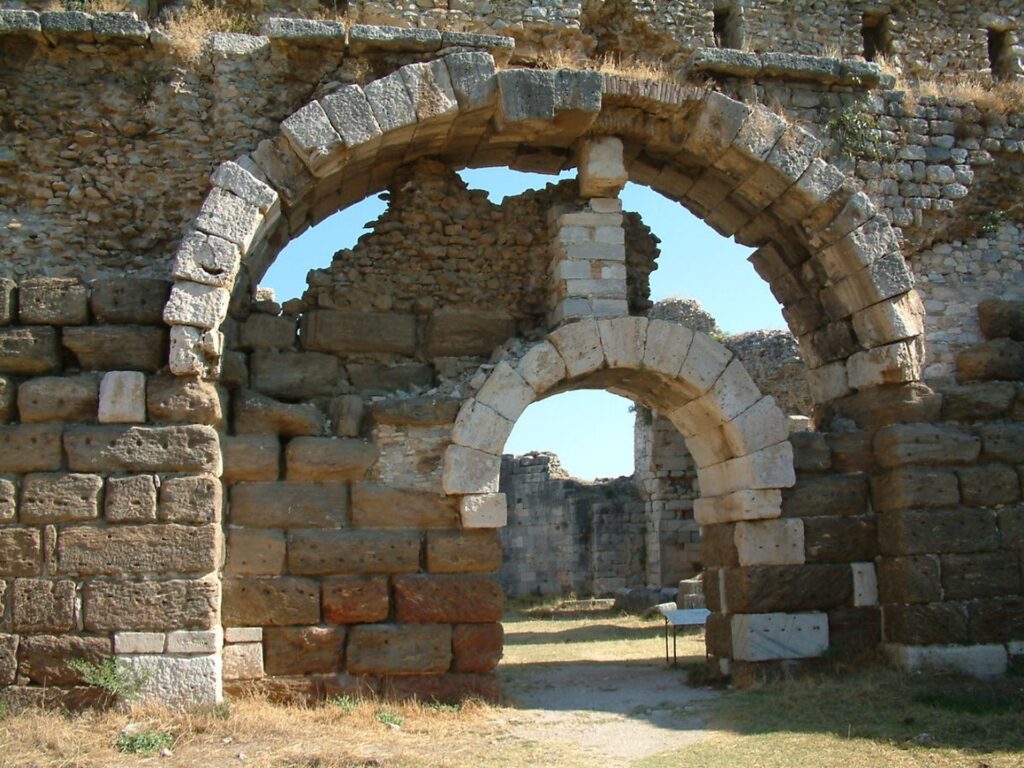
DIDYMA
The Temple at Didim, ancient Didyma is situated at Yenihisar, 100 km to Aydın and 160 km to İzmir.
Prof. Bean describes the temple as “thanks to temple at Didyma, it stands as a reminder that vastness in architecture is not a monopoly of the Roman Period”. Indeed, the temple from the Hellenistic period is a massive structure and hardly any monument from this period exceeds the size of it.
Didyma was not a city but the shrine related to Miletos, the great maritime city of the Archaic period, it was connected to Miletos with a 17 km sacred way. The excavations showed that the area was inhabited as an oracle center as early as the 8th century BCE, and name, like in İdyma or Sidyma was linked to Anatolian Luwian language. In the 3rd century BCE, it is recalled as one of the most important oracle centers of the ancient world.
The temple is in the Ionic order, a dipteros, meaning that either sides of the temple contained two rows of columns. It is a unique structure as there is not direct entrance to the cella, but entrance was provided by two tunnels, and instead of a roofed cella as we are used to see, the cella was never roofed and another temple in antis was built inside to serve where the cult statue of the god will be placed.
The stadion that was attached to the temple is also a unique application and was serving the guests to enjoy while waiting for the priests to perform the oracles.

